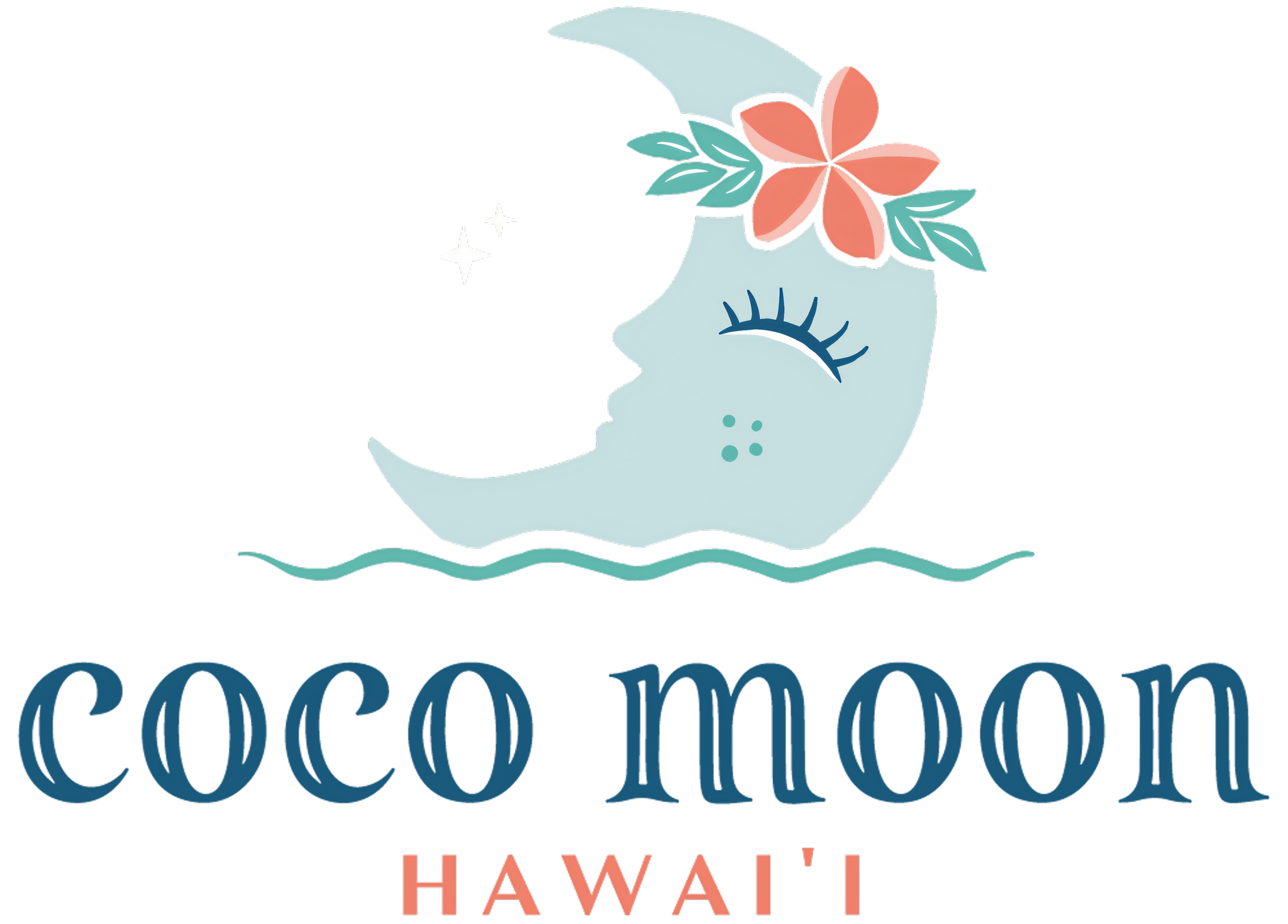As my due date drew nearer, I remember being so nervous about so many things. But breastfeeding wasn't one of them. I figured it would just come naturally and wasn't something to fret about. Boy was I wrong! While my son and I did eventually find our breastfeeding groove, I was so overwhelmed by it all. It turns out it didn't come totally naturally for me and I had 101 questions without an easy way to find answers.
But fear not mamas! We're working hard to make sure you've got the resources you need to be a breastfeeding super mama! We reached out to the wonderful ladies at Breastfeeding Hawai'i to share their expertise with our community. In this post, they give us some insight in to the first two weeks of breastfeeding. Over the next three weeks, we'll release three other installments of this series as they walk us through breastfeeding on day 1 to one year and beyond.
- - - -
What is the #1 thing you think new mamas should know about breastfeeding?
Breastfeeding in itself is a journey and is a skill set everyone can learn. Each pregnancy, child, birth and breastfeeding experience is unique. Breastfeeding can feel natural, but that doesn’t mean it’s easy. Labor is natural and we accept that it can be work. New mamas can be kind to themselves by giving themselves permission to ask for help early and often from their hui, community resources and specialists, like International Board Certified Lactation Consultants, if needed. Support is one of the most important things a mom can get while in the early stages of their breastfeeding journey. The first few weeks can take a little bit of patience with both mom and baby acclimating to feeding on demand and learning the art of breastfeeding. Making sure a good latch is formed is key at this time, and asking for help if it doesn’t feel comfortable or something doesn’t seem right.
There is a commonly vocalized fear by moms and the community that moms may not produce enough milk. There can be pressure to pump, eat certain foods, buy herbal supplements and lactation cookies in order to increase ones supply, or judgement if there doesn’t appear to be “enough” breast milk stashed in the refrigerator or freezer.
Can you walk us through how much milk is actually “enough” milk? How do you know if you need to work to increase your supply or if all is well?
On average babies eat between 2.5-3 times their birth weight in breast milk, every day, from about 2 weeks through 6 months of life. That means an 8 pound baby eats on average 20-24 total ounces in a day, or between 2-3 oz per meal depending on how often they feed.
The majority of mothers' breasts are capable of producing breast milk volume that can exclusively feed and nourish their developing infant. The concept of not enough milk is more often due to lack of education about what is a normal amount and “booby traps” - barriers within our communities and life function that make it difficult to maintain one’s milk supply.
Ways to know your baby is getting enough breast milk and all is well is if your baby:
- Has 6-8 wet diapers and 4 poopy diapers daily from about day 6 of age;
- Is alert at the breast when they initially latch on and do not immediately fall asleep;
- Eats actively for at least 10 minutes with audible swallows being heard (sounds like “kah”);
- Appears satisfied after eating;
- Is gaining weight (or losing in the first few days of life) appropriately for their age.
If you are pumping, you are generally making enough milk for your baby if your breasts can consistently produce between 2-4oz from both breasts combined in a 15 minute pump once your baby is over 7 days old. We recognize that many breast pumps come with 6 oz bottles; you’re not ever expected to fill the bottles full of breast milk. If you get 2oz from one breast and 1 oz from another, that’s 3 oz combined and that is perfectly normal and adequate if this is a consistent amount you can pump.
If your breasts do not produce 2-4oz of breast milk in a 15 minute pumping session at day 7 or later, you do not hear frequent swallows at the breast when feeding your infant, your infant is having difficulty with weight loss/gain, then we would recommend seeking help to address whatever may be creating a cause for low milk supply concern. In the meantime, continue to pump frequently.
Emptying the breasts tells your body to make more milk, while leaving milk in the breasts tells your body to decrease the amount of milk made.
What about the first few days after baby is born and you’re only producing colostrum...I know this can be a really stressful time for moms as they think they have no milk.
During the first 3-5 days of your baby's life, you have colostrum to feed your newborn, which is the sticky yellowish liquid. Your placenta started making colostrum around 4 months of pregnancy and continued to produce it until your baby’s birthday! Your baby has about a 5 day buffet to eat all this great colostrum to help set up their gut and immune system for good health while moving out that black sticky meconium. Because colostrum is thick and sticky it can take some time to get out, which is why your baby can feed for 35-60 minutes in the first few days. Your baby’s tummy is about the size of a grape on day 1 and a cherry tomato on day 3, so they don’t need a lot of milk volume and your breasts may not feel different after delivery compared to during pregnancy.
This is normal:)
As your infant feeds at the breast, they stimulate your breasts to make the flowing white milk everyone is thinking of. If you’re concerned about not having colostrum, have someone help guide you through hand expression or follow these steps! Seeing colostrum can help reassure moms that there IS milk for their baby.
What if a mom is having difficulty making enough colostrum or breastmilk but would still like to provide breastmilk for her baby?
Some moms may have this difficulty due to pre-existing medical conditions; medical conditions that arise during the pregnancy, birth or postpartum; medical conditions of the infant making it difficult for them to adequately stimulate the mother’s breasts; and societal and environmental barriers.
If the infant is in the NICU and qualifies for donor human milk, the hospital may offer this option for supplementing the infant until the mother is able to establish her milk supply; parents can always ask the hospital about this option.
If infants are at home, some moms may reach out to mom-to-mom milk sharing communities. This is where other mothers donate their pumped milk to another family or may offer to nurse another infant to provide them breast milk. We encourage families choosing to access mom-to-mom milk sharing communities, such as Eats on Feets Hawaiʻi and Human Milk 4 Human Babies Hawaiʻi, to read through what these groups offer, their recommendations for discussions between persons sharing milk so that both parties feel comfortable and reading about risks for transmission of viruses in non-pasteurized and tested breast milk. We support families choice in this option, and we encourage them to participate in being informed when making the choice:)
There was a study published in 2015 demonstrating when persons purchased pumped milk through social media sites that cow’s milk was found in 10% of the sold breast milk. We do not encourage purchasing donor milk through outlets other than donor human milk banks as there is an incentive to “top off” bottles of breast milk when it’s being sold.
Is pain while nursing normal?
The short answer is no. Babies vacuum suction milk out of our breasts when they nurse, so it can be tender or sore from the suction as one gets used to the new sensation, but it shouldn’t be painful and your nipples should look like they normally do when your baby is done nursing. Remember, when we vacuum our carpet - our carpet still looks like carpet when we’re done vacuuming. It doesn’t looked crunched, smashed, damaged or frayed - if it did we would be concerned there was something wrong with our vacuum and check it out!
Seek help from an International Board Certified Lactation Consultant if what you’ve tried from family and community support is not eliminating the pain.
What causes pain?
Pain is caused by an improper latch - either from:
1) positioning that makes it difficult for the infant to latch well, such as being too far away from the breast;
2) an infant who may have physical restrictions or limitations (ie. mouth, neck, jaw, low energy/tone from prematurity) making it difficult to latch well or maintain proper suction once latched;
3) increased sensitivity - some moms are sensitive to the suction and/or have sensitive skin and breakdown can happen that is painful;
4) an infection or abscess that may be present if an improper latch hasn’t been addressed.
These are just some things that can cause nursing to be painful.
How can a mom relieve pain and get comfort?
First, give yourself permission to recognize that breastfeeding can be hard, even if it’s “natural”. For many people it’s not as simple as “just putting your baby to your breast.”
Labor is also natural, and we’ve accepted that it can be difficult; we should start recognizing breastfeeding can also be difficult so that moms don’t continue to believe they must be doing something wrong when they experience pain. With support, just like in labor, you can do this:) You got this mama!
Second, give yourself permission to not “get all your areola into your baby’s mouth.” Your areola size is not part of the equation, and we all have different sized areolas. Breast tissue needs to be in your baby’s hard palate and your nipple at their soft palate and stay there in order for nursing to feel comfortable. We are breastfeeders, not nipplefeeders ;)
The most important activity is to use a position that your baby can do well in order to latch effectively - if available in that moment. If your nipples are sore, you can express colostrum/transitional/mature breast milk on your nipples and areolas to let them heal, and can put organic coconut oil on without wiping off prior to nursing. Hydrogels can also be used for soothing comfort; we recommend gently wiping your breast after use to remove any residue prior to a feeding.
If the usual positioning and latch techniques do not provide a comfortable nursing experience, ask for help from your hui, community lactation support persons such as at WIC, and if the pain isn’t resolved with their assistance or you are concerned about your baby, make an appointment with an International Board Certified Lactation Consultant (IBCLC). We generally recommend:
turning your baby tummy to your body, with neck, shoulders, spine and hips in alignment (a straight line), with your baby’s chin into your breast, their head tilted back and your nipple aimed onto their top lip so that when they open wide and you bring them onto your breast, your nipple aims up toward their palate and goes to their soft palate.
If your baby’s chin is in your breast and their head is tilted back, their nose will be off of your breast so that your baby can easily breathe.
When this is not comfortable, you can make an appointment with an IBCLC. Breastfeeding Hawai’i lists all breastfeeding support services by island on their website!
Positioning that works with infants needs to address their physical limitations. If your baby cannot turn their head both directions and instead can only tilt their chin into a shoulder, they can have difficulty latching to a breast in certain positions. If your baby’s tongue is not able to stay over the gum the entire time it nurses while maintaining a vacuum suction, they may tire and clamp down with their gums to hold on, or come off the breast frequently, or they may push your nipple forward in their mouth to protect their airway. These actions can result in your nipple sliding into their hard palate causing a compressed or lipstick shaped nipple, which is painful. An IBCLC can work with you to determine what your baby is doing while nursing in order to determine the best care plan possible for you and your baby to successfully nurse.
Signs that something isn’t right:
- Cracked, scabbing, bruising, bleeding nipples and/or areolas;
- Sensation of “glass shards” in your nipple while nursing, curling your toes from pain while nursing, having to clench your jaw and breathe through getting your baby to your breast, having anxiety about putting your baby to your breast because of anticipated pain;
- Low milk supply or loss of milk supply;
- Low number of feeds or increased frequency of feedings such as <8 feeds in a day or >14 feeds a day;
- Consistent short nursings or long nursings such as <5 minutes or >35 minutes every time (except during colostrum phase where babies may nurse for long periods of time - ask an IBCLC if you’re concerned about feeds);
- Infant falling asleep as soon as it gets on the breast;
- Infant repeatedly coming off and then back to the breast;
- Your breasts do not feel like they are draining when infant is feeding or don’t feel softer when infant is done feeding;
- Infant appears unsatisfied after nursing;
- Infant is losing more weight than normal in the first few days after birth and/or having difficulty gaining weight once your transitional milk starts coming in and milk volume increases. Babies should be back to birth weight by 7-10 days of life.
*Please know this list is not exhaustive. Please call or utilize breastfeeding support services in your area, or make an appointment with an IBCLC to address any nursing issues.
What are some tips you might give a mama who is struggling with breastfeeding (perhaps they can't get baby to latch or they are having other issues)?
Reach out and utilize all of the support services in your area: family and friends who have experience with breastfeeding or are breastfeeding support persons.
We recommend identifying at least 1-2 people prior to delivery that are in your support network that you can call or have come over when you’re having difficulties.
If this doesn’t resolve what you’re struggling with, check in with other community support services by calling or making an appointment with:
- a) WIC breastfeeding peer counselor or WIC staff member
- b) A hospital breastfeeding warmline (Kaiser and Tripler only service their members;other hospitals generally take all calls even if you didn’t deliver there)
- c) Local La Leche League leaders
- d) Hawaii Mothers’ Milk
- e) Make an appointment with a IBCLC
- f) Your healthcare provider such as your midwife, OB or pediatrician
- g) Healthy Mothers Healthy Babies Hawaii warm line
- h) New Parent Support Program if you are military - check what is offered on your base
Should mamas wait until breastfeeding is solidly established before introducing a bottle?
In general we recommend waiting until 4 weeks to introduce a bottle so that breastfeeding is well established - meaning the infant is latching well and comfortably and the moms milk supply is responding to the baby’s needs. And there are times, such as a baby with significant weight loss or jaundice, problems with latching or baby having trouble transferring milk directly from the breast, maternal illness, breast or nipple problems, reaching your long term breastfeeding goals may require feeding the baby with other methods such as a bottle, spoon, syringe, small cup, or using finger feeding or a supplemental nursing system.
If the mother and/or baby’s situation requires initiating these temporary measures, the mother will want to pump and/or hand express at least 8 times per day to increase and/or maintain her milk supply. That way she will have milk to provide the baby at the time and keep her milk supply established for when the baby is able to nurse at the breast. This approach is sometimes called a “Triple Plan” and should be planned and carried out with the guidance of a knowledgeable breastfeeding provider, such as an International Board Certified Lactation Consultant (IBCLC) in collaboration with your baby’s health care provide.
What tools, equipment, and/or accessories might you recommend to help with breastfeeding?
In addition to the items mentioned above, the use of nipple shields is sometimes appropriate. A mother should always know why she is using a nipple shield, when to wean off a nipple shield, and have an IBCLC or health care provider check to see if their baby is able to get enough milk from their breast while using the nipple shield with breastfeeding. Taking a weight (with a scale that can measure in grams) before and after a feeding gives the most accurate means of checking the baby has taken in milk. A nipple shield does not ensure that an infant is able to transfer milk out of the breast, and unfortunately sometimes infants are not getting milk out of a breast with or without a nipple shield due to difficulty with feedings.
Other equipment that can help to make breastfeeding easier is a co-sleeper, bed or bassinet kept next to you when you sleep can help you respond to baby’s early feeding cues (licking the lips, sticking the tongue out, putting the hands to the mouth, moving the head side to side like it is feeling for the nipple, waking or being restless while still asleep). Starting to feed the baby before it is crying for a long period of time or loudly can help make latching easier. “Wearing” your breastfeeding baby can also be a very helpful way for you to stay aware of babyʻs needs, as well as keep you and baby comforted by the close contact.
You don’t need to wear a bra when you are nursing, but if you do, choose one that is not binding anywhere around the breasts. Many women do find a bra or camisole helpful in holding nursing pads in, if needed, for leaking or soothing gel pads if nipples are sore.
Many women find that supportive pillows are useful so that baby can be nursed with less back and neck strain. These can be special nursing pillows, but pillows, or rolled up towels or blankets you have at home can often be shaped in ways that will provide the support needed when nursing frequently in a sitting position.
Breast massage is a free and invaluable tool at any point in time. Whether to stimulate milk production, reduce engorgement or help with relieving or avoiding plugged ducts, it is a simple, low tech and relaxing way to help.
Can the food you eat affect whether or not your baby will like the taste of your milk?
Flavors from the food you eat can definitely change the flavor, and even the color, of your milk!
There has been some research done that shows when infants are offered solids they may have less negative reactions to foods that they were exposed to through their mother’s milk. Breastfed babies are also more likely to accept new foods and eat more vegetables in early childhood!
We often find that mother’s are worried that eating strongly flavored or spicy foods will negatively affect their baby.
One fact you may find surprising is that babies can prefer strong flavors such as garlic. It is not recommended for mother’s to eliminate any foods from their diet just because they are breastfeeding.
It can take several hours for the foods we eat to transfer into breast milk. On occasion a mother may find that her baby has a consistent reaction to a specific food. Protein from cow’s milk is the most common source of food allergies in breastfed babies. A good resource for parents looking for more information on allergies is the Institute for the Advancement of Breastfeeding & Lactation Education.
- - - -
Click here to read the next installment of our breastfeeding series, which is all about months 1 - 3.
- - - -
Huge mahalo to everyone at Breastfeeding Hawaii that contributed to this amazing post! What an amazing resource you've helped us to create! Mahalo, mahalo, mahalo!









